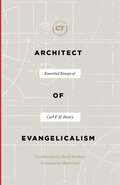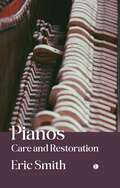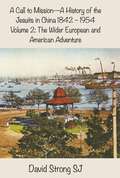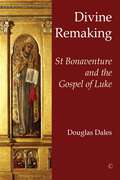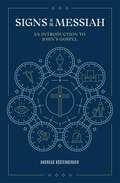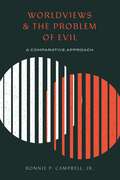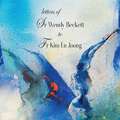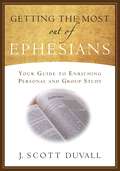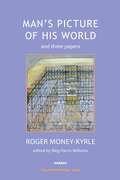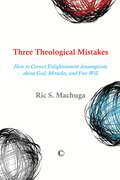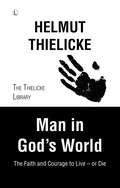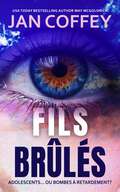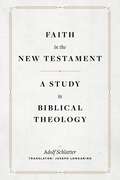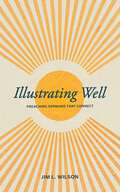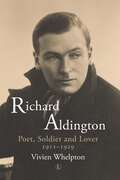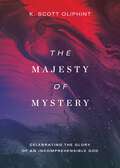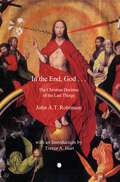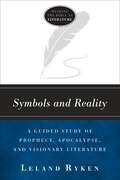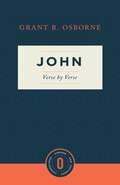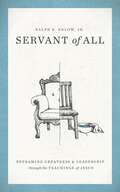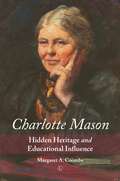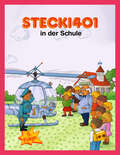- Table View
- List View
Architect of Evangelicalism: Essential Essays of Carl F. H. Henry (Best of Christianity Today)
by Carl F. H. HenryDiscover the ongoing relevance of the essential evangelical. In recent years, the label "evangelical" has been distorted and its usefulness questioned. No one is better equipped to provide a clear understanding of evangelicalism than the late Carl F. H. Henry, the founding editor of Christianity Today and the most influential theologian of American evangelicalism in the twentieth century. While Billy Graham was preaching the gospel to stadiums full of people, Henry was working tirelessly to help Christians adopt a worldview that encompasses all of life. Architect of Evangelicalism helps us gain a better sense of the roots of American evangelicalism by giving us the best of Henry's Christianity Today essays on subjects such as what defines evangelicalism, what separates it from theological liberalism, what evangelical Christian education should look like, and how evangelicals should engage with society.
Pianos: Care and Restoration
by Eric SmithA comprehensive guide to repairing, adjusting, and maintaining a piano, Pianos: Care and Restoration is suitable for pianists, amateurs, and would-be craftsmen. Eric Smith discusses the tools and materials required for restoration, and provides instructions for the repair and adjustment of the resonant parts, actions, and keyboard most often encountered. The book explains both upright and grand pianos in detail and includes explanations of toning piano hammers and purchasing and restoring older pianos. Illustrated with line drawings and photographs and including a glossary of terms, Pianos: Care and Restoration is an accessible guide which will enable anyone to improve the performance of their piano.
A Call to Mission - A History of the Jesuits in China 1842-1954: Volume 2: The Wider European and American Adventure
by David StrongChina has bulked large in the imagination of the Catholic Church for 500 years. It had been central to the missionary dream of the Jesuits for almost as long. However, only with this book's appearance has the detailed focus of attention shifted to the substantial and neglected period of catholic and Jesuit engagement with china - the almost 120 years from the second arrival of the Jesuits. Matteo Ricci the polymath, Ferdinand Verbeist and Adam Schall von Bell the astronomers and the exquisite painter who influenced Chinese painting beyond measure, Giuseppe Castiglione, have been written about, made ls of and been the heart and soul of the first stage of Jesuit impact on China - in the 17th and 18th Centuries. They brought Western learning and art to China and took Chinese language and literature to Europe. The Jesuits were the first multinational to be welcomed in China and they came with a specific method of engagement - to make friends build relationships and share their gifts before anything else was transacted, including conversations about Christianity. It remains an unsurpassed method of engagement with a rich and ancient people. But the second arrival - from the 1840's - was very different. It was made possible by the arrival of European governments and traders, many of whom came not just for financial gain but to spread their "superior" religion. This work by David Strong in two volumes is the first major treatment of the period from the arrival of the European and eventually American Jesuit missionaries under the protection of the so called Unequal Treaties through to their expulsion after the Communist victory in the long running civil war in 1949. Volume II- The Wider European Adventure- covers the commitments, places and activities of missions undertaken by the Spaniards, Austrian, Hungarians, Italians, French Canadians, and lastly in the 1930s, the Americans from California.
Divine Remaking: St Bonaventure and the Gospel of Luke
by Douglas DalesDouglas Dales's Divine Remaking marks the 800th anniversary of the birth of St Bonaventure in 1217. Bonaventure distilled and transformed a rich inheritance of patristic and medieval exegesis of the Bible developed within the monastic tradition and in the university schools in Paris, Oxford and elsewhere. While teaching in Paris and then leading the Franciscans as their Minister General, Bonaventure wrote a substantial commentary on the Gospel of St Luke. This commentary is an eminent example of how his understanding of the Bible lay at the root of all that he taught and wrote. Bonaventure's writing style reflects the beauty and ornate detail of contemporaneous works of art, stained glass, carvings in cathedrals and illuminated manuscripts. His writings, like the art of his day, are superb expressions of Christian theology and vision. Bonaventure had a formidable memory, and his capacity to draw from across the whole Latin Bible is extraordinary, instructive and enriching. His well-ordered mind was balanced, however, by a finely tuned spiritual and pastoral intuition, which makes his approach to the Gospels applicable and relevant to the reader of today. Divine Remaking is a bridge into Bonaventure's thought; it allows his insight into St Luke's Gospel to be understood by anyone seeking the divine truth in today's world.
Signs of the Messiah: An Introduction to John's Gospel
by Andreas KöstenbergerThat you may believe Have you ever asked God for a sign? Throughout Scripture, God gave signs to his people, whether mighty acts during the exodus or miracles through Elijah and Elisha. Jesus was also asked for a sign. Yet despite giving seven remarkable signs, his people refused to believe him. In Signs of the Messiah, Andreas Köstenberger--veteran New Testament scholar and expert on the Gospel of John--guides readers through John and highlights its plot and message. John's Gospel is written to inspire faith in Jesus. By keeping the Gospel's big picture in view, readers will see Jesus' mighty signs and be compelled to trust more fully in the Messiah. Readers will have a deeper grasp of John's message and intent through this short and accessible introduction.
Worldviews and the Problem of Evil: A Comparative Approach
by Ronnie P. Campbell Jr.How does the Christian response to the problem of evil contrast with that of other worldviews? Most attempts at answering the problem of evil either present a straightforward account of the truth claims of Christianity or defend a minimalist concept of God. This book is different. Inside, you'll examine four worldviews' responses to the problem of evil. Then, you'll hear the author's argument that Christian theism makes better sense of the phenomenon of evil in the worldâ€"equipping you to reach an informed conclusion. This book's unique approachâ€"integrating worldviews with apologetics with theologyâ€"will give you a better understanding of the debate surrounding the problem of evil, in both philosophy and theology. Learn to think cogently and theologically about the problem of evil and Christianity's ability to answer its challenges with Worldviews and the Problem of Evil as your guide.
Letters of Sr Wendy Beckett to Fr Kim En Joong
by Wendy Beckett En Joong KimSr Wendy and Fr Kim En Joong became friends after Fr Kim discovered a book of hers in a bookshop in Seoul, Korea, in the late 1990's. They never met in person, but from the time he first discovered a book by her until her death aged 88, in 2018, they corresoponded. This book reproduces a slection of here cards and short letters to Fr Kim with various pieces of his recent art work.
Pointing to the Pasturelands: Reflections on Evangelicalism, Doctrine, & Culture (Best of Christianity Today)
by J. I. PackerAll theology is doxology. Anglican theologian J. I. Packer was one of the most widely respected Christian writers of the twentieth century. Author of over forty books and named one of the most influential evangelicals by Time magazine and the readers of Christianity Today, Packer's impact is immense. He was known for profound theological writing that was always lively and worshipful. Pointing to the Pasturelands recovers several decades of Packer's contributions to the pages of Christianity Today. This includes his editorial columns, longer articles, and brief answers to readers' theology questions. The book concludes with a profile of Packer from Mark A. Noll. Enjoy timeless insights from a man whose life was devoted to knowing God and making him known.
The Final Days of Jesus: The Thrill of Defeat, The Agony of Victory: A Classical Historian Explores Jesus's Arrest, Trial, and Execution
by Mark D SmithIn The Final Days of Jesus, Mark Smith brings his experience as a classical historian to bear on the life of the historical Jesus, piecing together the volatile political context of first-century Judaea, as well as the lives of Pontius Pilate, Annas, and Joseph Caiaphas. The claim that 'the Jews crucified Jesus' has spawned a long and tragic history of Christian anti-Semitism. Smith challenges this claim through detailed exploration of Roman, Jewish, and Christian written sources and a broad range of archaeological evidence, such as the ossuary of Caiaphas, the 'Hidden Gate', and the rich vein of research devoted to the archaeology of ritual purity. The result is an earthy and nuanced portrait of Jewish life under Roman rule. From his discussion of the multiplicity and brutality of Roman executions to the intricate personal relationships among elites that provided the means of collaboration and redress, Smith details the complex push-pull of forces between Rome and the Temple as they collided in one history-changing week.
Getting the Most Out of Ephesians: Your Guide for Enriching Personal and Group Study
by J. Scott DuvallAn interactive workbook containing a good balance of insightful exposition and well--designed questions for personal and group application. The book also offers illustrations to help the reader understand the cultural background of Ephesians and interesting asides and quotes. Ideal for devotions as well as group or personal study.
Man's Picture of His World and Three Papers
by Roger Money-KyrleThis new edition of Roger Money-Kyrle's classic work is published together with three of his late papers, 'Cognitive development', 'The aim of psychoanalysis', and 'On being a psychoanalyst'. Its intention is to introduce new readers to this key Kleinian thinker, whose influence has been quiet and uncontroversial but deep and formative. The book also includes Donald Meltzer's discussion of the paper on 'Cognitive development'.
Three Theological Mistakes: How to Correct Enlightenment Assumptions about God, Miracles, and Free Will
by Ric S MachugaIs the existence of God a matter of faith or knowledge? Does God sometimes act miraculously or are there physical causes for everything? Is morality absolute or relative? Are humans truly free or does God's sovereignty determine everything? Whenbad things happen, is God the cause or are they the fault of humans? Too frequently Christians answer these questions with a Yes to one side and a No to the other side. Thomas Aquinas and Karl Barth answer Yes to both. Following their model, Machuga defends a third way which transcends the Enlightenment dichotomies of fideism vs. rationalism, supernaturalism vs. naturalism, relativism vs. absolutism, free will vs. predestination, and God's justice vs. his mercy. Machuga begins by showing how these false dichotomies grew out of the Enlightenment assumptions of mechanism, universal quantification, and mono-causation. He then corrects these demonstrably dubious assumptions by articulating a theory of dual-causation. The result is a thoroughly biblical understanding of God, miracles, and free will that can withstand the contemporary criticisms of both science and philosophy.
Man in God's World: The Faith and Courage to Live - or Die (Thielicke Library)
by Helmut ThielickeHelmut Thielicke's lectures, first spoken in defiance of the Nazi regime, are recorded here. He covers a wide range of topics, including, ethics, politics, the state, war, atomic power, economics, sex and art. Revolutionary in their time, they offeran example of how Christian faith can provide a strong ground to stand on when living in the constant danger of death. Delivered during World War II when one after another of Thielicke's meeting places were bombed, the lectures were aimed at people who were not conventional churchgoers and were not accustomed to the language and premises of the church. They were people who had to be met on their own ground, and then introduced to the Christian faith. Thielicke had a unique gift for finding the point of contact and addressing the Gospel to this point. Relevant even to this day, his words remind us what it means to be a Christian.
Fils Brûlés
by Jan Coffey May McGoldrickADOLESCENTS... OU BOMBES À RETARDEMENT ? La nation est saisie par des crimes choquants : De "bons enfants" qui deviennent soudainement et inexplicablement meurtriers. Lorsque le docteur Lexi Bradley, médecin dans le Connecticut, apprend que son fils est devenu l'un de ces tireurs, sa vie est bouleversée. Il y a dix ans, Bryan Atwood, agent des services secrets, est devenu un expert de la violence chez les adolescents. Aujourd'hui, le cauchemar est de retour. Alors qu'il est affecté à cette nouvelle vague de meurtres, une IRM du cerveau du garçon révèle ce qui doit être de la pure science-fiction. Avec l'aide de Lexi, Bryan est déterminé à découvrir la vérité avant que d'autres enfants ne meurent, mais l'enquête sur une piste d'horreurs enfouies à travers le pays les projette tous les deux dans un monde dangereux où la cupidité des entreprises peut conduire à une mort soudaine. Lauréat de la Feuille d'or du meilleur roman
Faith in the New Testament: A Study in Biblical Theology
by Adolf SchlatterA classic study now available in English First appearing in 1885, Schlatter's Der Glaube im Neuen Testament ( Faith in the New Testament) is a thorough analysis of the concept of faith. Taking into account Old Testament, rabbinic, and key first-century writings, Schlatter provides an exhaustive study on the meaning and implications of faith in the New Testament. It is a philological masterpiece, making its translation into English a great contribution to New Testament theological studies. This fresh translation retains the substance and style of his original work, giving a new audience direct access to Schlatter's work. Schlatter's rigorous thought remains invaluable today.
Illustrating Well: Preaching Sermons that Connect
by Jim L. WilsonCommunicate well by illustrating well Preachers face all kinds of obstacles on Sunday mornings. A sermon that employs interesting and appropriate illustrations can help break through barriers and convey truth in a fresh way. In Illustrating Well, Jim L. Wilson provides pastors with the tools to effectively use sermon illustrations to help them communicate the Bible's teachings. To reach the hearts and minds of their congregations, preachers must do more than explain the truth; they must demonstrate how the truth relates to real life. Every sermon should be theologically rich and thoroughly biblical, but a good illustration can take what might be an abstract concept and turn it into a concrete reality for the listener. In Illustrating Well, preachers will discover what makes for a compelling illustration as well as the benefits and potential pitfalls of particular types of illustrations.
Richard Aldington: Poet, Soldier and Lover 1911-1929
by Vivien WhelptonThis is a literary biography of Richard Aldington, founding member of the Imagist Movement, poet of the First World War, author of 'Death of a Hero' and a biography of D.H. Lawrence. Aldington's is an extraordinary human story dealing with contemporary issues, such as confrontation of sexual mores of the day and the impact of his soldier experience on his life and work. There hasn't been a recent biography of Aldington, the only one of the war poets not to have one. With the interest in the First World War increasing as we near the centenary, the time is right for this book. This biography explores the relationships of Aldington with other prominent literary figures: Ezra Pound, Herbert Read, T.S. Eliot, D.H. Lawrence, and his unsuccessful marriage with H.D. This first instalment of a hopefully two-volume biography covers Aldington's life and work up to 1929. It investigates the years 1911-1915 in which Aldington helped found Modernism and formed relationships with other Modernists, the years 1916-19 when his life fell apart after his soldier experience, the years 1920-28 when he tried to re-establish his literary career, laid the foundations of modern literary criticism, and his writing of Death of a Hero at the end of the decade, a blistering attack on all that had made the war possible. Offical Blurb: The story of Richard Aldington, outstanding Imagist poet and author of the bestselling war novel, Death of a Hero (1929), takes place against the backdrop of some of the most turbulent and creative years of the twentieth century. Vivien Whelpton provides a remarkably detailed and sensitive portrayal of the writer from early adolescence. His life as a stalwart of the pre-war London literary scene, as a soldier, and in the difficult aftermath of the First World War is deftly rendered through a careful and detailed analysis of the novels, poems and letters of the writer himself and his close circle of acquaintance. The complexities of London's Bohemia, with its scandalous relationships, social grandstanding and incredible creative output, are masterfully untangled, and the spotlight placed firmly on the talented group of poets christened by Ezra Pound as 'Imagistes'. The author demonstrates profound psychological insight into Aldington's character and childhood in her nuanced analysis of his post-war survivor's guilt, and consideration of the three most influential women in his life: his wife, the gifted American poet, H.D.; Dorothy Yorke, the woman he left her for; and Brigit Patmore, his brilliant and fascinating older mistress.Richard Aldington: Poet, Soldier and Lover vividly reveals Aldington's warm and passionate nature and the vitality which characterised his life and works, concluding with his triumphant personal and literary resurrection with the publication of Death of a Hero.
The Majesty of Mystery: Celebrating the Glory of an Incomprehensible God
by K. Scott OliphintHow can God be three and one? How can God take on a human nature? If God planned everything, how can I be responsible? Do my prayers make any difference in God's plan? Christians may attempt to "know" God to the best of their ability--leading some to limit God as they contain Him within tidy answers for human understanding. In The Majesty of Mystery, K. Scott Oliphint encourages believers to embrace the mysteries of Christian faith: the Trinity, the incarnation, eternal life, and the balance between God's sovereign will and human choices. Drawing from the Reformed tradition and interacting with the biblical text, Oliphint shows how a profound recognition of our own limitations can lead us into a richer awareness of God's infinite majesty. Written with deep theological knowledge and threaded with everyday implications, The Majesty of Mystery connects the dots between humanity and God, belief and practice, mystery and worship. Oliphint invites readers to rediscover the purpose to which all theology aims--the worship of the incomprehensible God who faithfully reveals himself in Scripture.
In the End, God: A Study of the Christian Doctrine of the Last Things
by John At RobinsonDeath, judgement, heaven and hell - these are the 'Four Last Things' traditionally linked together under the heading of 'Eschatology'. In this book, John Robinson examines them all with trenchancy and lucidity, providing a new and vital understanding of how these themes relate to contemporary Christian life. In the End, God ... identifies a gap that exists in the treatment of eschatology within the Christian faith. As Robinson points out, eschatology had traditionally dealt with the last things in a way that is remote and removed from everyday life and Christianity, and the goal of his book is to make eschatology fully relevant to the modern world. Although it is commonly held that eschatology within modern Christianity is centred on the fact and moment of death, Robinson shows that the true nature of eschatology is something quite different. It is not about the last things after everything else, but rather is about the relation of all things to the 'last things' or, as it were, about the 'lastness' of all things. Revealing the foundation of biblical eschatology to be the experience of God by the community of faith, Robinson calls readers to embrace the eschatological vision of the Bible, but to do so in a way that is alert to its mythic character. In the course of these explorations he also lays bare his own theology of universal salvation. However, contrary to what one may expect, this universalism is one that seeks to take both human freedom and the reality of hell with the utmost seriousness. This special edition of John A.T. Robinson's classic text also includes an extended introductory essay by Professor Trevor Hart of the University of St Andrews, and an exchange between Robinson and Thomas F. Torrance, first published in 1949 in the Scottish Journal of Theology.
Symbols and Reality: A Guided Study of Prophecy, Apocalypse, and Visionary Literature (Reading the bible as literature)
by Leland RykenThis is the fifth of a six-volume series called Reading the Bible as Literature. In this volume, the author not only explores the intersection of the Bible and literature, but he also shows pastors, students, and teachers of the Bible how to appreciate the craftsmanship of visionary literature and prophetic oracles and how to interpret them correctly. Dr. Ryken goes one step further than merely explaining the genre by including exercises to help students master this rich literary treasure. Speaking of the entire series, Ryken says, "The niche that these volumes are designed to fill is the literary approach to the Bible. This has been my scholarly passion for nearly half a century. It is my belief that a literary approach to the Bible is the common reader's friend, in contract to the more specialized types of scholarship on the Bible."
John Verse by Verse (Osborne New Testament Commentaries)
by Grant R. OsborneJohn is at once the most complex and the easiest to understand of all the Gospels. If we want a young seeker or new believer to read something that is both clear and filled with the gospel and good basic theology, we give them the Gospel of John. And if we want to study an incredibly deep theological masterpiece that stretches the brightest mind, we open the Gospel of John. It is the most evangelistic account of Jesus' life and ministry, and it also gives the mature Christian deep theological truths to chew on. In John Verse by Verse, respected New Testament scholar Grant R. Osborne invites the reader to become caught up in the dramatic masterpiece of the Fourth Gospel. He writes, "If I were teaching a course in college or seminary on creative writing, John's Gospel would be set alongside Shakespeare as models of brilliant characterization and plot." It is perhaps Osborne's favorite book of the Bible, and enthusiasm for it shines on every page. The Osborne New Testament Commentaries, by respected professor and author Grant R. Osborne, are for people seeking a straightforward explanation of the text in its context, avoiding either oversimplification or technical complexity. Osborne brings out the riches of the New Testament, making each book accessible for pastors and all who consider themselves students of Scripture.
Servant of All: Reframing Greatness and Leadership through the Teachings of Jesus
by Ralph E. Enlow Jr.What did Jesus really mean when he said, "Anyone who wants to be first must be the very last, the servant of all" (Mark 9:35)? Servant leadership is commended by popular leadership writers and scholars. However, much of the practical, theoretical, and even theological commentary on servant leadership doesn't do the Bible justice. It fails to account for the context and history of interpretation around this often-quoted saying of Jesus. This context has everything to do with a truly biblical understanding of servant leadership, and that's what Servant of All unfolds. In a culture where greatness is often confused with fame or competence, Servant of All is a much-needed correction. This useful guide includes personal and group reflection questions, ideal for ministry training and discipleship.
Charlotte Mason: Hidden Heritage and Educational Influence
by Margaret CoombsAs the acknowledged founder and philosopher of the Parents' National Educational Union (PNEU), Charlotte Mason was revered by her followers as a saintly Madonna figure. She died in 1923 at the peak of her fame, having achieved mythic status as the Principal of her House of Education and wide recognition after the introduction of her liberal educational programmes into state schools. Yet her early life and heritage remained shrouded in mystery. Drawing upon insubstantiated sources, the official biography released in 1960 confused rather than illuminated Charlotte's background, contributing to several enduring misapprehensions. In her new and definitive biography, Margaret Coombs draws on years of research to reveal for the first time thehidden backdrop to Charlotte Mason's life, tracing the lives of her previously undiscovered Quaker ancestors to offer a better understanding of the roots of her personality and ideas. Coombs charts her rise from humble beginnings as an orphaned pupil-teacher to great heights as a lady of culture venerated within prestigious PNEU circles, illustrating how with determination she surmounted the Victorian age's rigid class divisions to achieve her educational vision. A thorough analysis of Charlotte Mason's educational influences and key friendships challenges longstanding notions about the roots of her philosophy, offering a more realistic picture of her life and work than ever accomplished before. With a growing following in the USA and Australia, Charlotte Mason's ideas have a clear relevance to the continuing educational debate today. Admirers of her philosophy and scholars of the history of education will fi nd much to enthral and instruct them in these pages.
Creata in Cielo
by Jan Coffey May McGoldrickUna storia romantica di amore perduto… e di amore ritrovato! Meg Murphy, ex redattrice di un'importante casa editrice di Boston, è in viaggio verso la località turistica di Newport, Rhode Island, dove lei e suo marito Robert sono stati in vacanza insieme per anni. Robert, purtroppo, è morto. Meg si trova a un bivio della sua vita. Robert è morto improvvisamente cinque anni prima e, sebbene abbia accettato la sua morte, o almeno così ha detto a numerosi terapeuti e amici, vive per la fantasia di questo viaggio di anniversario. Quest'anno, però, il suo marito fantasma le sta dicendo che è arrivato il momento di smettere. Ma a Newport nulla va come previsto. Meg incrocia subito un tassista burbero e affascinante di nome Evan Knight. Quello che non sa è che Evan è in realtà uno scrittore di bestseller, autore di romanzi ispirati alla realtà. Per documentare le sue storie, Evan vive sempre sotto copertura, e questa volta ha scelto di essere un tassista. L'ultima cosa che Evan vuole è una relazione che interferisca con la sua vita accuratamente costruita. L'ultima cosa che Meg vuole è una relazione con qualcuno di nuovo. Robert, però, ha altri piani…
Stecki 401 in der Schule: Konzentration und Entspannung Für Kinder 4-12 Durch Lustige und Spannende Hör-Geschichten (Stecki 401)
by Hassan RefayStell dir vor, du hast dich mit Stecki 401 im Schulhof verabredet. Du willst ihm deine Schule zeigen, doch Stecki 401 kommt nicht. Hat er Angst vor Rainer? Als du dann in der Klasse sitzt, geht plötzlich die Tür auf und wieder zu. "Wer ist da hinausgegangen?" fragt der Lehrer. "Niemand", antworten die Kinder. "Aber die Tür kann doch nicht von alleine auf- und zugehen!" sagt der Lehrer. "Ein Gespenst!" meint eines der Kinder. Da hörst du neben dir leise "Tut, tut, tut...! Es ist Stecki 401, der sich unsichtbar gemacht hat. Mit seiner Zauberkreide bringt er die ganze Schule durcheinander. Mitten im schönsten Trubel landen drei Hubschrauber auf dem Schulhof. Stecki 401 muß schnellstens verschwinden...
